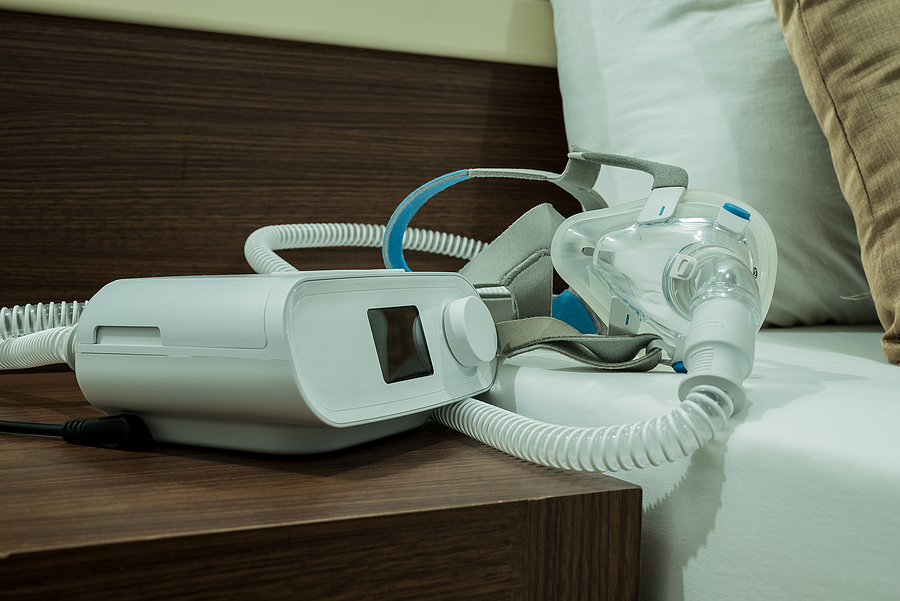Sleep Apnea is a sleep disorder that is characterized by recurring pauses in breathing during sleep. Some notable symptoms are loud snoring during sleep and daytime sleepiness.
Related Blog: Can Room Temperature Affect Your Quality of Sleep?
The main types are central and obstructive sleep apnea. For central sleep apnea (CSA), the disruptions are caused by a lack of coordination between the brain and the muscles that aid breathing. In obstructive sleep apnea (OSA), the pauses are caused by narrow airways.
This article discusses the causes, risk factors, and treatment of this disorder.
What is Sleep Apnea?
Sleep apnea is a severe sleep disorder in which breathing intermittently stops and starts during sleep. In obstructive sleep apnea (OSA), throat muscles relax and block the passage of air into the lungs. Brain damage could disrupt signals to the breathing muscles, leading to sleep breathing disorder. Frequent pauses in breath cause a low quality of sleep.
Symptoms
The symptoms of each type of sleep apnea sometimes overlap, making it tricky to determine. They stem from irregular breathing patterns at night and low sleep quality.
- Loud snoring
- Gasps for air
- Insomnia
- Daytime drowsiness- hypersomnia
- Dry mouth
- Grumpiness
- Wakefulness
What Causes Sleep Apnea?
Obstructive Sleep Apnea
When the back muscles of the throat relax and collapse, airways are blocked, and breathing is temporarily disrupted, leading to low oxygen levels in the blood. The brain senses that the patient is unable to breathe and prompts wakefulness.
Central Sleep Apnea
This type of sleep disorder occurs when the brain fails to send signals to the breathing muscles. The brain stem fails to recognize carbon dioxide levels in the blood. Patients may be forced to remain awake due to shortness of breath.
Risk Factors of Sleep Apnea
The risk factors are different for both types of sleeping disorders. Risk factors range from age, weight, and anatomy of the patient.
Risk Factors Obstructive Sleep Apnea
- Age: The risk of experiencing obstructive sleep apnea is higher with an increase in age. People over 60 are more susceptible to experiencing obstructive sleep apnea.
- High Body Mass Index: Scientific research has espoused a correlation between high BMI and the risk of developing obstructive sleep apnea.
- Body Structure: People who have a more oversized tongue and a small lower jaw are at a higher risk of developing OSA.
Risk Factors for Central Sleep Apnea
CSA occurs as a result of brain stem damage. Heart and kidney failure and excess production of growth hormones also heighten the risk of developing the disorder. These factors include:
- Age: Senior citizens above 65 years are exposed to the risk of central sleep apnea.
- Gender: CSA is more prevalent in men due to different levels of male sex hormones.
- Drug Abuse: The abuse of opioids and other prescription drugs could cause central sleep apnea.
Treatment for Sleep Apnea
Medical interventions for sleep-breathing disorders are geared towards restoring proper breathing during sleep.
OSA Treatment
Positive Airway Pressure is a therapy that keeps the air passages open during treatment for sleep apnea. Pressurized air is pushed to the lungs from a machine through the nostrils. Patients with tissue obstruction go through surgery to expand the airway.
In other instances, a device could be implanted to stimulate the nerves responsible for breathing. Health practitioners could propose lifestyle changes to cutting weight, such as exercise. Moreover, patients are advised to quit smoking and imbibing alcohol.
CSA Treatment
Treatment for sleep apnea is geared toward resolving abnormal breathing. In persistent cases, positive airway pressure devices are implanted to enhance steady breathing. Oxygen supplemental therapy is induced to speed up the intake of air.





